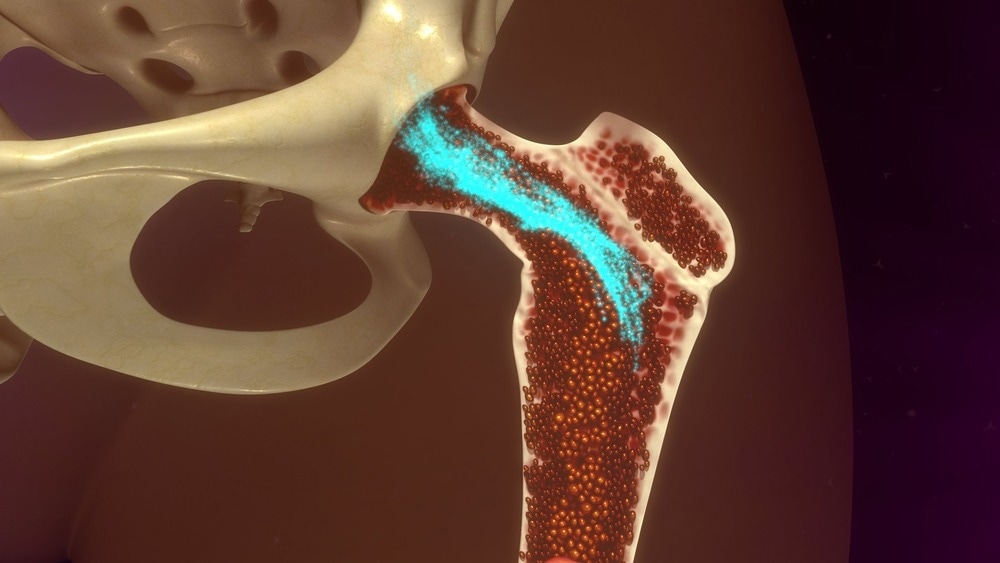A new study discovered that genes that have long been known to regulate bone formation before birth also govern bone healing later in life.

Image Credit: sciencepics/Shutterstock.com
A new study led by scientists at NYU Langone Health identified key Hox genes, one for each location in the body, as the controllers of stem cells involved in both bone formation and repair. HOX proteins function as the body’s “zip code,” indicating the position of limbs in the fetus by encoding transcription factor instructions, which adhere to DNA and influence gene activity.
According to the study authors, such adjustments direct immature stem cells as they multiply and mature in the womb to become heart muscle, nerves, bones, and so on, and in the right places. Bone is one of the tissues that maintain reservoirs of stem cells into adulthood, ready to mature into replacement cells that retain healthy tissue and heal broken bones.
The new study, which was published in the journal Development, discovered that Hox genetic programs in adulthood control a type of bone stem cell known as periosteal stem and progenitors cells, or PSCPs.
According to the womb-determined positions in which they first formed; these cells play a critical role in bone healing. HOX genes, which are already known to encode the spatial code that determines the body's formation plan, were shown in the study to give adult stem cells from different locations the properties required to regenerate the specific bone in which they reside.
According to scientists, as humans age, such stem cells become depleted, resulting in weaker bones that are more likely to fracture and heal more slowly. To compensate for this loss of healing capacity, the researchers showed that enhancing the activity of the gene that directs the formation of the Hoxa10 transcription factor in the tibia, the larger of the two “shin bones,” in aging mice resulted in a 32.5% restoration of fracture repair capacity.
Our data revealed a previously unknown function for Homeobox or Hox genes as essential location-specific regulators of stem cell maturity in adulthood, with short-term local increases in their expression able to drive healing. The therapeutic promise of adult stem cells as a source of bone-making cells in healing-compromised people is massive.”
Philipp Leucht, MD, PhD, Study Corresponding Author and Raj-Sobti-Menon Associate Professor of Orthopedic Surgery, Department of Orthopedic Surgery, NYU Grossman School of Medicine
Bone requires attention
A key question in the field has been whether stem cells in the marrow of a bone’s center boost bone healing more than those known to pool in the adjacent periosteum, the outer bone layer made up of tough connective tissue and cell-filled areas.
Both stem cell types have the ability to mature into osteoblasts, the cells that lay down new bone in response to a fracture, but the latest research asserts that periosteum stem cells, or PSPCs, are the most significant contributors to bone repair.
The study’s findings strengthen the knowledge that, to keep stem cell pools on hand, they must receive signals to continue dividing and multiplying without maturing, preserving their “stemness” until required. The body controls bone repair by controlling how immature stem cells remain, with the most primitive cells playing the most significant role in healing due to their flexibility and potential to multiply rapidly.
The latest research reveals that Hox deficiency increases the propensity of stem cells to differentiate into mature bone cell types. Alternatively, increasing Hoxa10 expression in tibia stem and progenitor cells reprogrammed them into a more stem cell-like state, which is required if they are to become new bone-making cells as part of the healing process.
According to the authors, PSPCs appear as a mixed stem cell population that includes naive periosteal stem cells (PSCs) and more mature periosteal progenitor 1 and 2 (PP1 and PP2) cells. The researchers discovered that Hoxa10 expression was highest in PSCs and decreased significantly as cells progressed up the lineage hierarchy to PP1 and PP2.
Experiments in which the Hox genes were activated in these more mature progenitors resulted in a threefold increase in PSCs as cells were reprogrammed into a more primitive stem cell identity.
PSPCs have distinguishing characteristics that form the basis for future cell-based therapies, including their greater tendency to naturally regenerate bone than many related stem cell groups. By modifying Hox activity in these cells, we can help them regenerate bone more effectively in individuals with deficient bone-healing capacity.”
Kevin Leclerc, Co-Corresponding Lead Author and Postdoctoral Scholar, NYU Grossman School of Medicine
Source:
Journal reference:
Leclerc, K., et al. (2023). Hox genes are critical regulators of periosteal stem cell identity. Development. doi.org/10.1242/dev.201391.